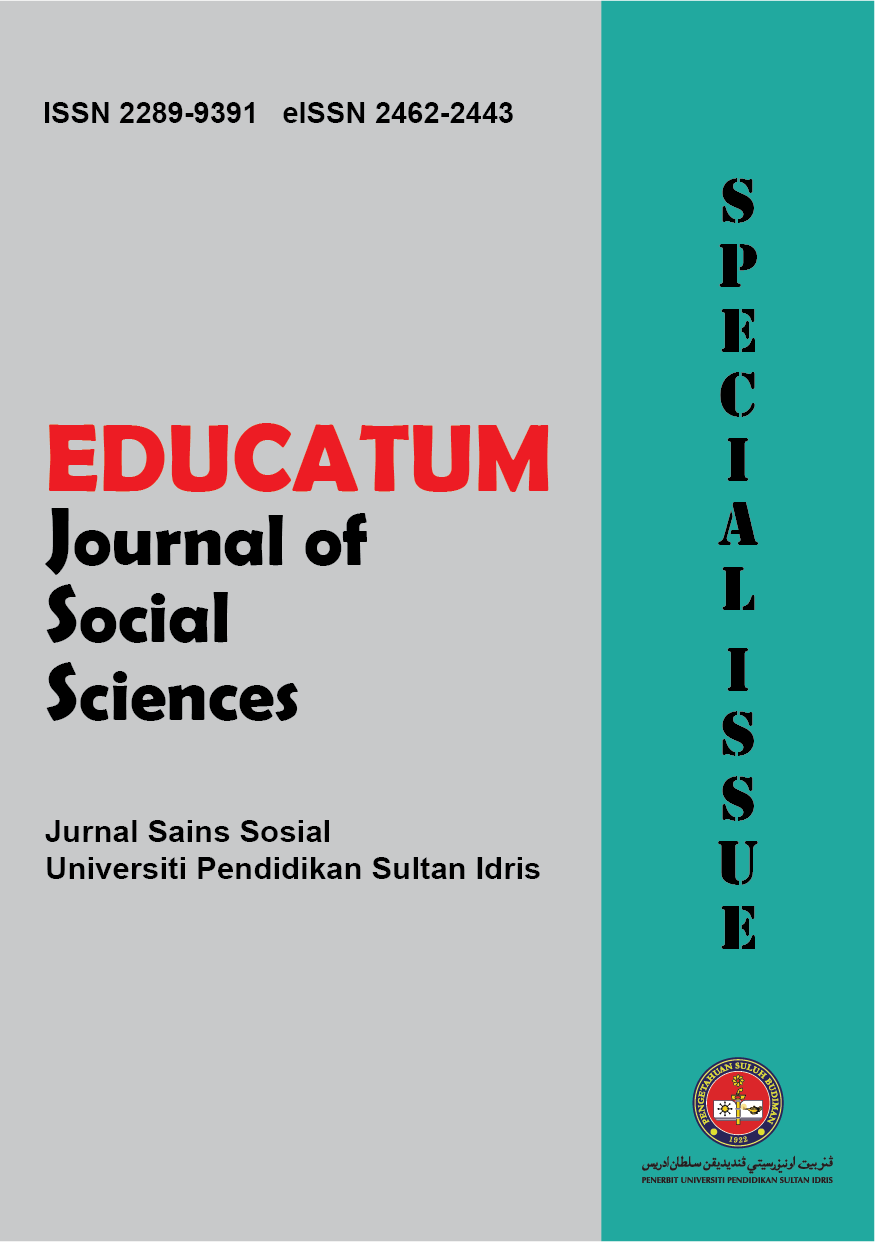The Relationship between Burnout and Perceived Job Performance among Private-sector Employees in Malaysia
DOI:
https://doi.org/10.37134/ejoss.vol11.sp.4.2025Keywords:
fatigue, work performance, private sector workers, work industryAbstract
This study examined the relationship between burnout and perceived job performance among private-sector employees in Malaysia. Data was collected through an online survey, 149 respondents were (100 females, 49 males) conveniently sampled. The study utilized two instruments, the Oldenburg Burnout Inventory (OLBI) and the Individual Work Performance Questionnaires (IWPQ). Three objectives were aimed for this study, (1) to determine the levels of burnout among private-sector employees (2) to determine the levels of perceived job performance among private-sector employees and (3) to identify the relationship between burnout and perceived job performance among private-sector employees. Both descriptive and inferential analyses were conducted, including Pearson's correlation, to evaluate the data and explore the relationships between key variables. The results revealed that the majority of respondents exhibited low levels of burnout (n = 60) and a low level of perceived job performance (n = 96). Additionally, a significant negative correlation was found between burnout and perceived job performance (r = -.609, p < .001). The findings of this study are critical to enhancing organizational performance as minimizing burnout may improve employees’ productivity and performance, resulting in higher quality work, better client service, and overall corporate success. Organizations might use this data to establish targeted strategies and programs designed to alleviate burnout, such as stress management workshops and counseling services. The study also adds valuable empirical data to the existing body of research on burnout and job performance. It addresses existing gaps in the literature, especially regarding the Malaysian context, and provides a basis for future research exploring similar themes.
Downloads
References
Abdul Latif, F. D., & Saraih, U. N. (2016). Factors influencing employee turnover in private sector in Malaysia: A concept paper. Australian Journal of Basic and Applied Sciences, 10(7), 51-55. https://www.researchgate.net/publication/309426266_Factors_Influencing_Employee_Turnover_in_Private_Sector_in_Malaysian_A_Concept_Paper
Baard, S. K., Rench, T. A., & Kozlowski, S. W. J. (2014). Performance Adaptation: A theoretical integration and review. Journal of Management, 40(1), 48-99. https://doi.org/10.1080/02678370500340728
Bertolino, M., Truxillo, D. M., & Fraccaroli, F. (2013). Age effects on perceived personality and job performance. Journal of Managerial Psychology, 28(7), 867-885. https://sci-hub.se/https://doi.org/10.1108/JMP-07-2013-0222
Dyrbye, L. N., Shanafelt, T. D., Johnson, P. O., Johnson, L. A., Satele, D., & West, C. P. (2019). A cross-sectional study exploring the relationship between burnout, absenteeism, and job performance among American nurses. BMC Nursing, 18(1), 57-65. https://doi.org/10.1186/s12912-019-0382-7
Elnaga, A., & Imran, A. (2013). The effect of training on employee performance. European Journal of Business and Management, 5(4), 137-147. https://core.ac.uk/download/pdf/234624593.pdf
Elrehail, H., Harazneh, I., Abuhjeeleh, M., Alzghou, A., Alnajdawi, S., & Ibrahim, H. M. H. (2019). Employee satisfaction, human resource management practices and competitive advantage: The case of Northern Cyprus. European Journal of Management and Business Economics, 29(2), 125-149. https://doi.org/10.1108/EJMBE-01-2019-0001
Gallup. (2021, December 27). Gender gap in worker burnout widened amid the pandemic. https://www.gallup.com/workplace/358349/gender-gap-worker-burnout-widened-amid-pandemic.aspx
Halbesleben J.R. B., & Demerouti, E. (2005). The construct validity of an alternative measure of burnout: Investigating the English translation of the Oldenburg Burnout Inventory. Work & Stress, 19(3), 208-220. https://doi.org/10.1080/02678370500340728
Hassim, N. H., Yusri, M. Y., Zin, S. H. M., Ibrahim, N. S., Shafee, C. M. N. M., & Thassanee, T. (2022). A case study to investigate the level of burnout of employees among government and private Sectors in Malaysia. Journal of Academic Research in Business and Social Sciences, 12(9), 1735-1751. https://hrmars.com/papers_submitted/14705/a-case-study-to-investigate-the-level-of-burnout-of-employees-among-government-and- private-sectors-in-malaysia.pdf
Ignatius, C. (2022, May 12). Malaysians seek more mental health support from their employers as many face burnouts. Business Today. https://www.businesstoday.com.my/2022/05/12/malaysians-seek- more-mental-health-support-from-their-employers-as-many-face-burnout/
Maroney, J. (2017, February 1). The top three factors driving employee burnout. Forbes. Retrieved August 17, 2024, from https://www.forbes.com/sites/groupthink/2017/02/01/the-biggest-workplace-challenge-employee-burnout/
Mat Rifin, H., & Danaee, M. (2022). Association between burnout, job dissatisfaction and intention to leave among medical researchers in a research organisation in Malaysia during the COVID-19 Pandemic. International Journal of Environmental Research and Public Health, 19(16). https://doi.org/10.3390/ijerph191610017
Montañez, R. (2019, June 5). Burnout is sabotaging employee retention: Three things you must know to help. Forbes. https://www.forbes.com/sites/rachelmontanez/2019/06/05/burnout-is- sabotaging-employee-retention-three-things-you-must-know-to- help/?sh=4bb55bd15f0e
Padmanabhan, L., & Magesh, R. (2016). Difference between employees marital status and performance level in IT industry. Imperial Journal of Interdisciplinary Research, 2(6), 1173-1176. https://www.academia.edu/36524209/Difference_between_Employees_Marital_Status_and_Performance_Level_in_IT_Industry
Torlak, N.G., & Kuzey, C. (2019). Leadership, job satisfaction and performance links in private education institutes of Pakistan. International Journal of Productivity and Performance Management, 68(2), 276-295. https://doi.org/10.1108/IJPPM-05-2018-0182
Vardarlier, P. (2016). Strategic approach to human resources management during crisis. Procedia - Social and Behavioral Sciences, 235, 463-472. https://doi.org/10.1016/j.sbspro.2016.11.057
Xiu, L., Liang, X., Chen, Z., & Xu, W. (2017). Strategic flexibility, innovative HR practices, and firm performance: A moderated mediation model. Personnel Review, 46(7), 1335-1357. https://doi.org/10.1108/PR-09-2016-0252
Downloads
Published
Issue
Section
License
Copyright (c) 2025 Nor Aishah Yahya, Nurul Ain Hidayah Abas

This work is licensed under a Creative Commons Attribution-NonCommercial-ShareAlike 4.0 International License.





